London is full of intriguing and sometimes puzzling street names. We navigate the history of some of the more unusual examples…
Words by Felicity Day
Stand in almost any spot in central London and you can see the layers of history around you: a modern building jostling for space with a medieval one; a cathedral spire competing with a skyscraper; a two-hundred-year-old statue standing watch over a station entrance.
But we tend to forget, as we stroll through the capital taking in the sights, that its long and incredibly rich history is as evident in the names of its streets and districts – many of them centuries old, more of them curious and most of them taken for granted by residents, tourists and day-trippers alike.
London street names – what do they really mean?
Where to begin with mapping out London street names? In this coronation year, Westminster, scene of our new King’s investiture, is perhaps as good a place as any. The heart of Britain’s political and religious establishment for over a thousand years, many of its signposts speak evocatively of its past.
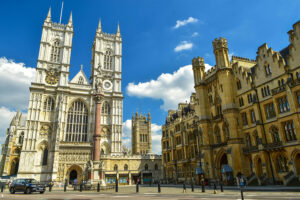
Little known is that Broad Sanctuary – down which The King’s Procession passed to enter Westminster Abbey through the Great West Door for the coronation on 6 May – stood within the church’s precinct in medieval times, a place where refugees and even criminals could seek shelter and immunity from arrest. Nearby Abbey Orchard Street, meanwhile, was where the Abbey’s Benedictine monks grew fruit, supplementing a larger space for growing vegetables at Covent (earlier Convent) Garden, in their possession until the dissolution of the monasteries.
Downing Street, home of Britain’s Prime Minster since 1735 and unquestionably Westminster’s most iconic thoroughfare, is one of numerous London street names after its developer, though George Downing – a ‘perfidious rogue and doubly perjured traitor’ according to Samuel Pepys – is far more fascinating than the likes of the Earl of Leicester or Sir Thomas Bond.
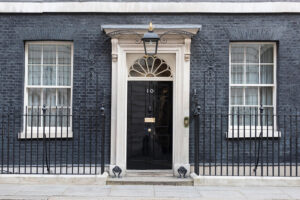
One of Oliver Cromwell’s spymasters, Downing first acquired a lease of the Crown land on which his eponymous street was built during the interregnum. Unperturbed when the sale was declared void at the Restoration, he brazenly declared that the land was given in payment of a debt and, having first traded his secrets for a pardon from Charles II, was lawfully granted the lease. Little did he know how important the terraced houses he knocked up purely for profit during the 1680s would one day become.
Roads named after our royals might seem easy ones to identify – Queen Anne’s Gate and Victoria Street certainly are. But plenty of crown connections remain obscure – like the long-forgotten link between sovereign and Scotland Yard. The original location of the headquarters of the Metropolitan Police (who carried the name with them), it was home to the London residence of the kings of Scotland until the union of the Scottish and English crowns in 1603.
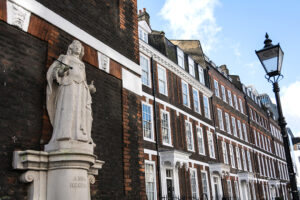
And how many of us know that the un-named king of King’s Cross is the unpopular George IV? His statue looked down on the poverty-stricken neighbourhood formerly known as Battle Bridge – a haunt of thieves and home to a smallpox hospital – from the top of a monument erected in 1830. It was pulled down 15 years later but the name stuck.
Then there’s The Mall. The red-paved road to Buckingham Palace was originally a place of amusement for Charles II: an alley created for him to play the croquet-like game of pall-mall, which also gave its name to the busy thoroughfare that runs parallel. And it was Charles’s grandfather, James I, who gave us Birdcage Walk, home to his aviary.
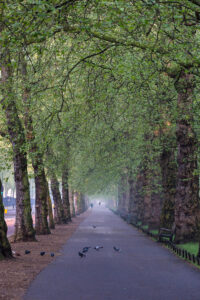
Plenty of other London street names provide a similar route back in time. Parliament Hill on Hampstead Heath, offering one of the most impressive skyline views of London, is thought to have been a gun emplacement for the Parliamentarian forces during the Civil War – certainly a splendid look-out point. London Wall was named for the Roman wall that marked the city boundary at that point, and Temple for a house belonging to the Knights Templar in the 1100s.
If any one name defies guesses as to its origins it has to be Piccadilly. In fact, there’s a simple explanation: in the 17th century the street was home to a tailor who had made his fortune manufacturing ‘pickadills’ – stiff collars that supported the then-fashionable ruffs – and his house was derisively dubbed ‘Pickadilly’ Hall. Part of the road was briefly known as Portugal Street in honour of Charles II’s Portuguese wife, Catherine of Braganza, but the more distinctive Piccadilly was its settled name by the mid-18th century, the less-forgettable address no doubt preferred by the many aristocrats who called it home.
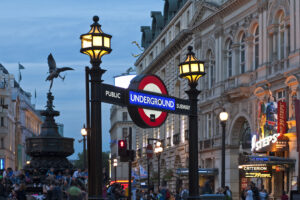
Incidentally, it’s just one of many roads to have changed their name: the shopping mecca of Oxford Street, for example, was Tyburn Way until the end of the 18th century, after the gallows at its western end on which 50,000 condemned prisoners were hanged, before the famous ‘tree’ was dismantled in 1783.
But back to more obscure monikers. Soho, a former hunting ground, reportedly takes its name from a hunting cry – think tally-ho! Portobello Road, site of the famous antiques market, certainly derives its name from Puerto Bello in Panama, site of a triumphant British victory in 1739, during the War of the Austrian Succession. And ever wondered why London’s modern financial quarter is known as Canary Wharf? Simply because it stands on the site of the old West India Docks and takes its name from the 1930s warehouse of Fruit Lines Ltd, used for the tomatoes and bananas they brought into Britain from the Canary Islands.
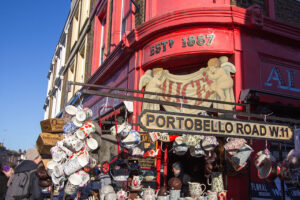
For centuries before the arrival of the Wharf’s skyscrapers, of course, all financial business was carried on in the City, home to some of the oldest London addresses. Pudding Lane might make us think of the bakery where the Great Fire of London started in 1666 but the street actually takes its name not from bakers but butchers, who earlier used it to take their ‘pudding’ – meaning animal guts and entrails in Middle English – from the meat market down to a Thames water-gate.
An even older Anglo-Saxon word meaning ‘tidal inlet’ gave its name to Fleet Street, which follows the course of the river Fleet, re-routed underground by 1766 for use as a sewer.
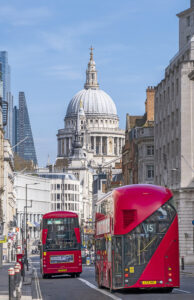
Old English also gives us Charing Cross: the settlement of Cyrringe that stood here over 1,000 years ago took its name from cierring, meaning ‘the turn or bend’ – probably a reference to the bend in the Thames. The cross came later, when Edward I erected the last of the 12 stone crosses that were a memorial to his late wife Eleanor in the 1290s.
Once you begin to investigate, you realise that almost every London street name has a story to tell of the city’s past and its people. Perhaps next time you look up to one of its signposts, you’ll be inspired to seek out more than just your destination.
This is an extract, read the full feature in the July/August 2023 issue of BRITAIN, available to buy here from Friday 9 June.
Read more:

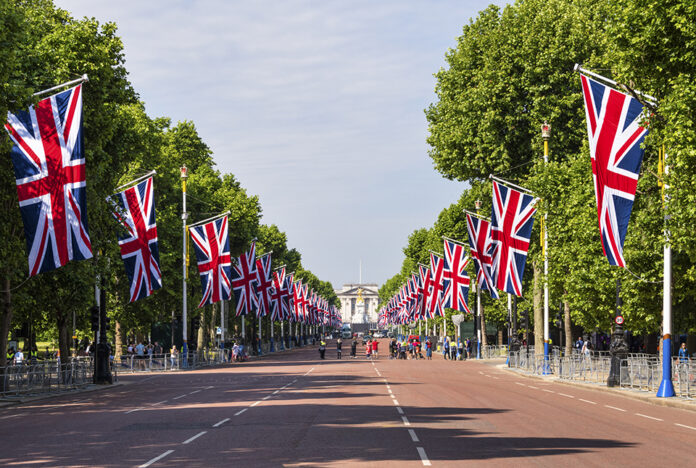




 © 2024
© 2024